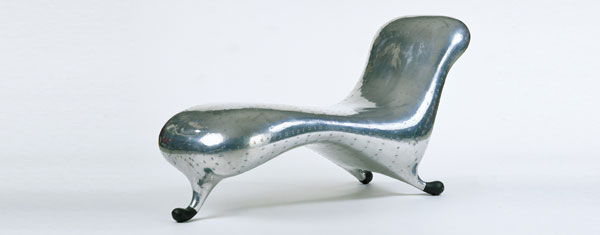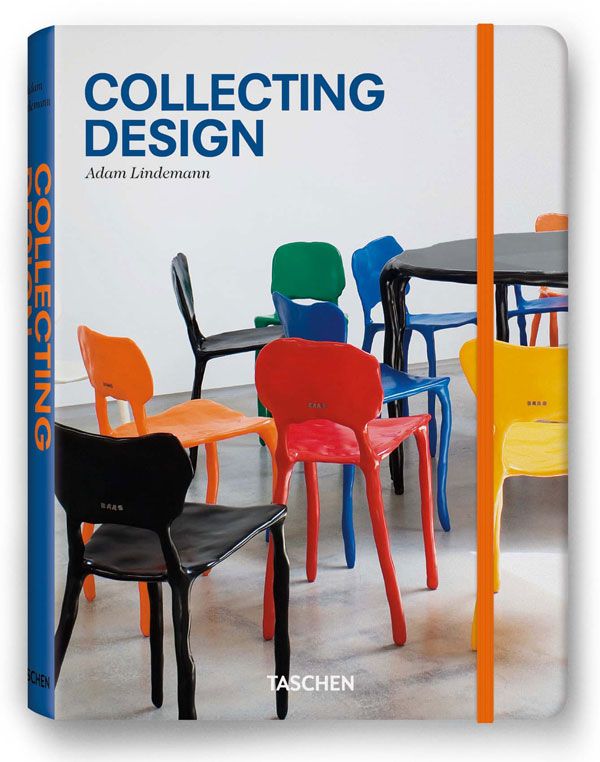Collecting Design by Adam Lindemann

- Adam Lindemann
- Alexander Payne
- aluminium panels
- Antiques Roadshow
- Auction
- Axel Vervoordt
- Barry Friedman
- Bruno Bischofberger
- Carlo Mollino
- Christmas
- Clémence Krzentowski
- Collecting
- Collection
- Collector
- Dealer
- Dennis Freedman
- designer
- Didier Krzentowski
- Eileen Gray
- Embody 3D
- evaluator
- Evan Snyderman
- french painting
- Ian Schrager
- industrial design
- James Zemaitis
- Karl Lagerfeld
- Lockheed
- Los Angeles
- lounge Newson
- Marc Jacobs
- Marc Newson
- Martin Gibson
- material
- metal
- Michael Boyd
- Murray Moss
- Patrick Seguin
- Peter M. Brant
- Peter Marino
- Philippe Garner
- Reed Krakoff
- Richard Wright
- Robert Rubin
- Ronald Lauder Dealers Anthony DeLorenzo
- rugged sheet metal finish
- Shannon Loughrey
- steel
- Suzanne Demisch
- transportation
- Ulrich Fiedler
- United States
- USD
- Vienna
- Willis Tastemakers Jacques Grange
- Zesty Meyers
Article by Martin Gibson – @embody3d @martingibson – 08.12.2010
On the 2nd of May, 2o1o Marc Newson’s iconic ‘Lockheed Lounge’ (pictured above) sold for $1.6 million US. The design was conceived by Newson in 1986 shortly after he finished his design education and it was exhibited in a Sydney gallery. This brief exposure sent cataclysms around the design world with the piece being featured in an array of popular style magazines and consequently established Newson’s international design career; and the rest is history. The design is very loosely inspired by an 18th century chaises lounge Newson had witnessed in a French painting. The design itself is like a huge organic blob of smelted mercury with roast turkey-like feet. The design took many months of Newson tirelessly hammering hundreds of industrial aluminium panels onto a home-made fibreglass mould. The piece whether purposefully or not is more than just design, it is a statement. It is even humorous by suggesting an inducing, comfortable form juxtaposed by a rugged sheet metal finish.
Of course as a piece of modern mass produced design the ‘Lockheed Lounge’ is a complete and utter failure. The design is so ridiculously labour and material intensive to produce, it could never be viable to manufacture in bulk. As a means of supporting a human comfortably like a chaises lounge is intended, it also fails. Environmentally it is a material hog and will turn minimalists around in their graves, and not to mention the sheer weight of this bulky clunk of metal for transportation and distribution…thank gosh it wasn’t made from steel.
This ‘Lockheed Lounge’ despite what you may think of it, is one of the most highly desired modern design collectibles in the world and it has somehow managed to appreciate in value since 1986. Just recently we received a book from Taschen called ‘Collecting Design’ by Adam Lindemann which describes in detail just how these processes and transactions in the design collection market really work. As someone who studies design by evaluating a piece of design across a broad range of criteria, it has always fascinated me how some pieces managed to appreciate in value, others seemed to depreciate, whilst other pieces fluctuated depending on supply and demand and what trends are popular. The complexities of these transactions is expertly outlined by 32 internationally renowned collectors and marked movers by sharing their stories in how they established themselves in the market, their passion for certain design areas, and their strategies for valuing and acquiring design collectables. These autobiographies include noteworthy names like:
Collectors
Bruno Bischofberger, Michael Boyd, Peter M. Brant, Dennis Freedman, Dakis Joannou, Reed Krakoff, Ronald Lauder
Dealers
Anthony DeLorenzo, Suzanne Demisch, Ulrich Fiedler, Barry Friedman, Didier and Clémence Krzentowski, Zesty Meyers and Evan Snyderman, Murray Moss, Patrick Seguin, Alasdhair Willis
Tastemakers
Jacques Grange, Marc Jacobs, Karl Lagerfeld, Peter Marino, Robert Rubin, Ian Schrager, Axel Vervoordt
Auction Experts
Gerti Draxler from Dorotheum, Vienna, Philippe Garner from Christie’s, Peter and Shannon Loughrey from LAMA, Los Angeles, Alexander Payne from Phillips de Pury, Richard Wright, James Zemaitis from Sotheby’s
Have you ever wondered why an Art Deco leather armchair by Eileen Gray sold for 27.8 million and a mid-century dining table by Carlo Mollino’s sold for 3.8 million? Or have you ever wondered how the recent economic collapse has affected the global design collection market? Or perhaps you have had questions like what the difference is between vintage pieces vs limited editions? Or maybe you want to start collecting design but you are just unsure what styles and trends are in fashion, and which design might pay the greatest dividends in the long-term? Well this might just be the book for you.
The book tackles these issues by concentrating its efforts on furniture design in particular. The 32 autobiographies are split up into 5 different user-perspectives of the design collection industry that include:
The Designer
The Collector
The Dealer
The Tastemaker, and
The Auction House Expert
These 5 perspectives give a holistic insight into the industry and reveal the conflicting interests, juxtapositions, challenges and rivalries these industry roles have with one another. The stories featured throughout the autobiographies are insightful and offer genuine information and advice to the reader. Because of this autobiographical collation there is a real free-flowing nature to each story and a sense of unpredictability as to what learning each professional is trying to extract. Each of these mini chapters contains a comprehensively written memoir followed by some beautiful design photographs.
‘Collecting Design’ makes a bad mistake by not outlining well in its foreword, introduction or blurb what the book sets out to achieve. ‘Collecting Design’ tends to ask questions and seeks opinions rather than attempting to tackle these issues head on in a scholarly manner. However one must recognise that many of these issues are opinionated in nature; conjectures one might say, just like how on one of my favorite TV shows, ‘Antiques Roadshow’, one evaluator can have a drastically different appraisal to another. But even after reading the book, all 300 pages long and intensively worded, I still am not quite sure who this book is for. Is it for design collectors themselves to become better collectors? Is it for people considering getting into the marketplace? Is it for designers to try to make more memorable design pieces? Or is it for people who just have a general interest in fine design and enjoy casual antique/artefact collecting? I am really not sure, but one could conclude that all these readers could reap some value from ‘Collecting Design’. The book is incredibly niche however. It is rare enough that we see industrial design books, yet alone one about industrial design collecting, so it could be said that the book has a very narrow audience. You will leave this book filled with roughly 1000 years of wisdom and knowledge of design collection and despite it being a fascinating and enjoyable journey, like me, you will probably struggle to find any practical avenue of expressing and trialing these new-found understandings.
Despite this, ‘Collecting Design’ is well written, beautifully presented, well structured and features hundreds of pieces that I certainly haven’t had the pleasure of viewing before, making it a great Christmas read.
[rating:3]




1 Comment
[…] This post was mentioned on Twitter by Blink Product Design, Embody 3D. Embody 3D said: New Blog Post: Collecting Design by Adam Lindemann – Article by Martin Gibson @embody3d @martingibson – 08.12.2010 … http://ow.ly/1aQab2 […]